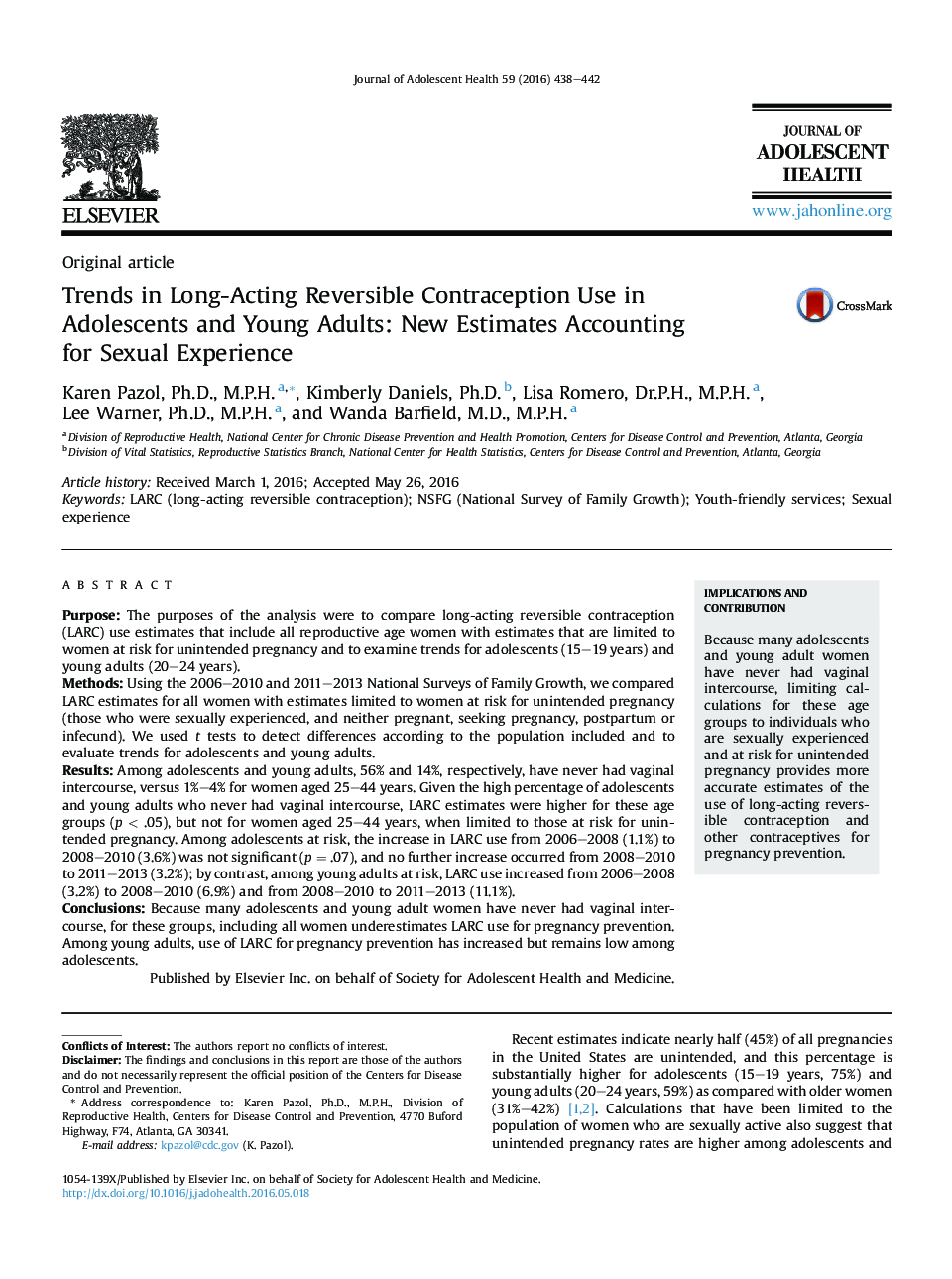| Article ID | Journal | Published Year | Pages | File Type |
|---|---|---|---|---|
| 5121441 | Journal of Adolescent Health | 2016 | 5 Pages |
PurposeThe purposes of the analysis were to compare long-acting reversible contraception (LARC) use estimates that include all reproductive age women with estimates that are limited to women at risk for unintended pregnancy and to examine trends for adolescents (15-19 years) and young adults (20-24 years).MethodsUsing the 2006-2010 and 2011-2013 National Surveys of Family Growth, we compared LARC estimates for all women with estimates limited to women at risk for unintended pregnancy (those who were sexually experienced, and neither pregnant, seeking pregnancy, postpartum or infecund). We used t tests to detect differences according to the population included and to evaluate trends for adolescents and young adults.ResultsAmong adolescents and young adults, 56% and 14%, respectively, have never had vaginal intercourse, versus 1%-4% for women aged 25-44 years. Given the high percentage of adolescents and young adults who never had vaginal intercourse, LARC estimates were higher for these age groups (p < .05), but not for women aged 25-44 years, when limited to those at risk for unintended pregnancy. Among adolescents at risk, the increase in LARC use from 2006-2008 (1.1%) to 2008-2010 (3.6%) was not significant (p = .07), and no further increase occurred from 2008-2010 to 2011-2013 (3.2%); by contrast, among young adults at risk, LARC use increased from 2006-2008 (3.2%) to 2008-2010 (6.9%) and from 2008-2010 to 2011-2013 (11.1%).ConclusionsBecause many adolescents and young adult women have never had vaginal intercourse, for these groups, including all women underestimates LARC use for pregnancy prevention. Among young adults, use of LARC for pregnancy prevention has increased but remains low among adolescents.
